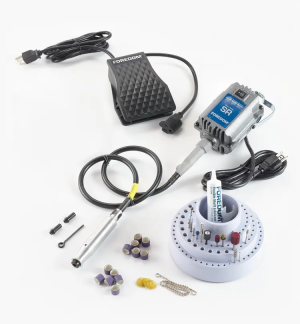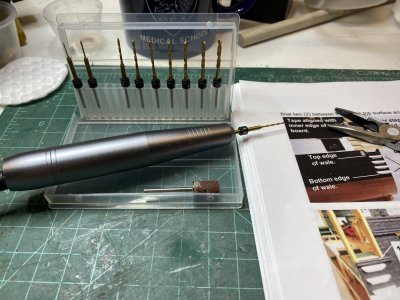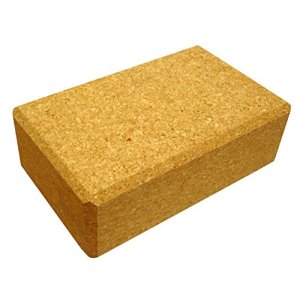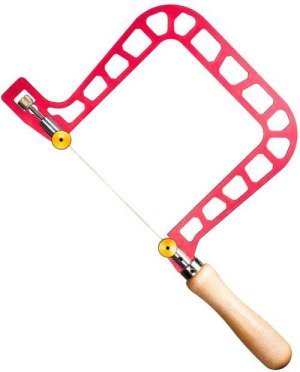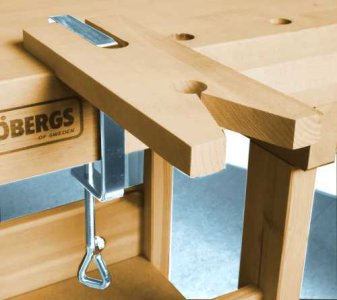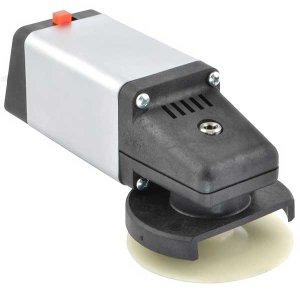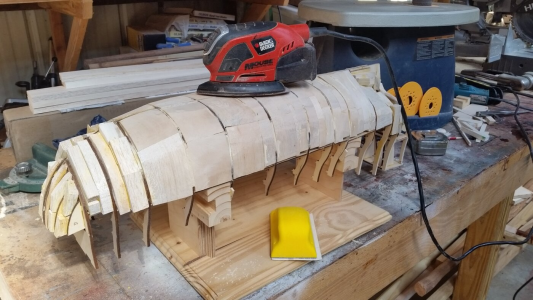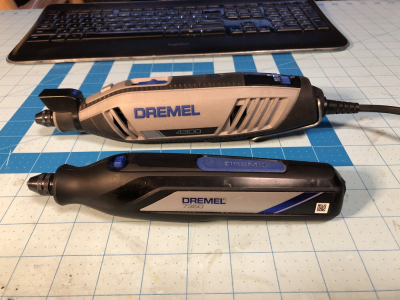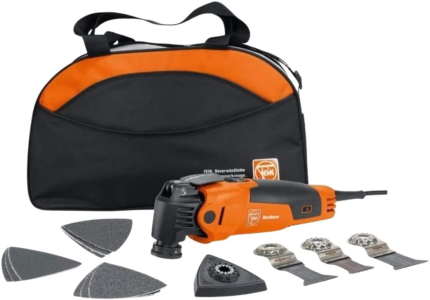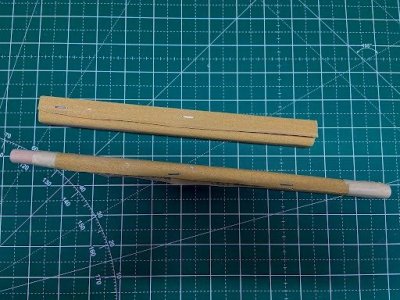I have three Dremel MotoTools, two corded and one battery operated, all variable speed. They get more use trimming my dogs' toenails than they do building models. Dremel tools are useful for
some grinding and cutting and high-speed sanding tasks, depending upon the circumstances. The Dremel's "weakest link" is its low torque power, especially at lower speeds. It won't win any prizes for ergonomic design, either. The "fat" body makes doing fine work with it difficult. For mentioned above, Dremels are designed to run at very high RPM speeds and take a
very small "bite" with each revolution. Therefore, if you want to do any sort of fine work with a Dremel, you'd better have a very steady hand.
A far better option, albeit more expensive, is a high-torque variable speed flexible shaft machine, not a high-speed, low-torque rotary tool. There are Chinese knock-offs, of course, but the "industry standard" is the Foredom flex shaft machine line. A basic motor and handpiece will start around a couple of hundred bucks, as I recall, and the prices go up from there. There's a very large range of Foredom flex shaft powered accessories. By taking advantage of the wide range of accessories and specialty handpieces in the Foredom "system," savings can be realized on top quality tools that would otherwise have to be purchased separately. You only have to buy the "tool," not the "motor" every time.
Foredom tools live long lives and there are always many available on the used market. Check out eBay and local "classifieds" sites for used listings at big savings.
The economics are like most tool purchases. You can spend three or four times the price of a Dremel tool for a new Foredom, or two times the price of a Dremel for a good used Foredom flex shaft machine, but the new Foredom machine will outlast at least a half-dozen Dremels and the used Foredom probably close to the same. The Foredom is a commerical level machine. The Dremel is produced for the hobby and homeowner market. I'm not knocking the Dremel for what it is, although most expect far more from it than it's capable of doing. But if you are talking about using a rotary tool for the rest of your life, amortized over time, the Foredom will give you a lot more bang for your buck and if you find you no longer have any use for your Foredom, you will always find it easy to sell at a reasonable price.
I got my very lightly used Foredom flex shaft machine and two handpieces, the standard collet (just like a Dremel) and the standard drill bit chuck models, used from a local "want ads" website for $75. A lady bought it to make jewelry and lost interest in the hobby. I've used it regularly for about ten years now with no problems at all.
